A Study in
Calculating Scale Weight
Text & Pictures by Kit Headley
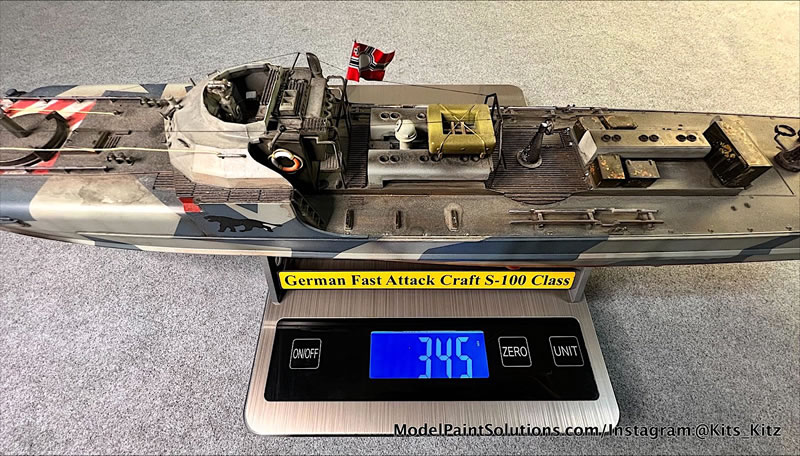

While it’s not often considered in scale modeling, the weight of a scale model can be an interesting and relevant detail that can increase our appreciation of the engineering of the 1/1 scale subject. A sizable portion of my interest in this hobby is the way it helps me to understand and internalize an object with which I’m fascinated.
I love the way that both WingNut Wings and Zoukei Mura engineer their kits because they teach you how the real thing was put together and allow you to appreciate some of the challenges engineers had to overcome and how they did so. One of the design details that is often critical is weight; be it an aircraft, ship, or even a piece of armor. I want to understand this. When the Soviets built the Alfa class attack sub out of titanium to make it the fastest sub in the world. I wanted to feel how light it was compared to more conventionally built steel-hulled subs.
So……
The internet tells me that the Alfa class sub weighs in at 2,300 tons (surfaced). For my 1:350 scale model weight I first tried just dividing that number by 350.
2,300tons/350=6.57tons
Immediately I realized that I could not make my model weigh six and a half tons and assumed that number wasn’t correct. I was missing something significant. I’m not a mathematician so I had to figure this out in the simplest way I could; with a cube.
Imagine a cube that measures 2 units along each edge, this cube will contain 8 units and therefore we can say it weighs 8 units.
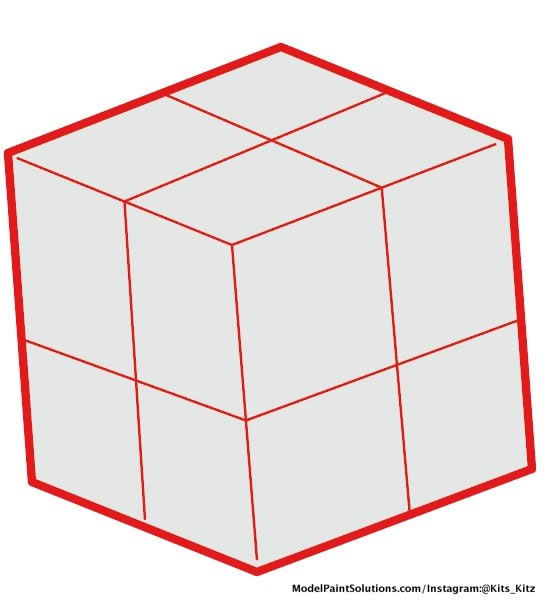
If this cube was then reduced to half scale (1:2) it would have to be divided by 2 three times as shown.
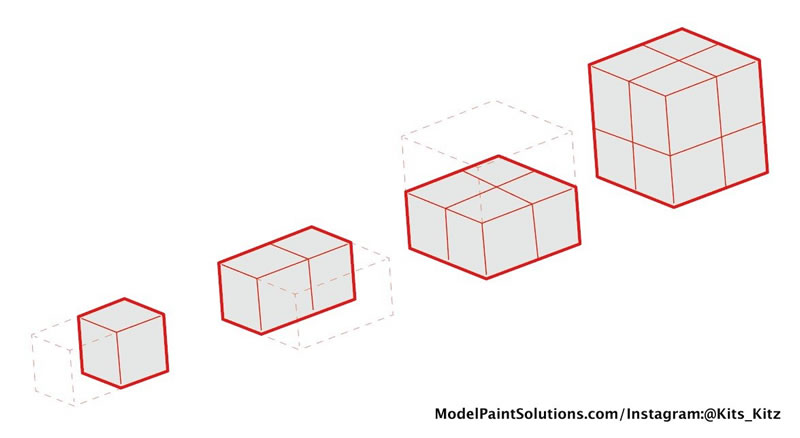
Now the cube weighs only 1 unit. It was reduced by a factor of 2 three times, for a total reduction factor of 8.
The shortcut of all of this is that to achieve a scale weight, the real life weight of the object needs to be divided by the cube of the scale factor.
1:16 - (16x16x16= 4,096)
1:32 - (32x32x32= 32,768)
1:35 - (35x35x35= 42,875)
1:48 - (48x48x48= 110,592)
1:72 - (72x72x72= 373,248)
1:350 - (350x350x350= 42,875,000)
So, back to the Alfa sub.
Real life weight is 2,300 tons, but my 1:350 model sub is going to weigh less than a ton, so that unit is not useful to me. I’m going to weigh it in grams so I have to convert: 2,300 tons is equal to 2,086,524,902 grams.
Therefore 2,086,524,902 grams / 42,875,000 = 48.66g
My titanium hulled Alfa sub should weigh 48.66g
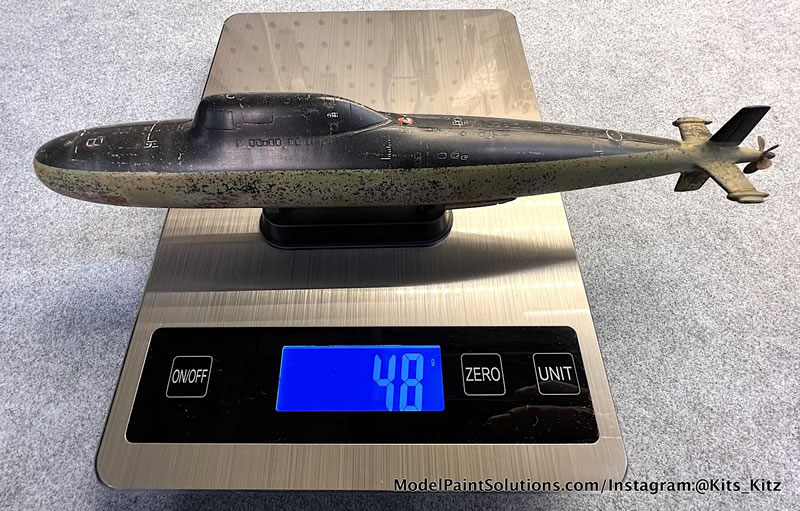
To beef up the Alfa, I dropped lead beads dipped in super glue through a small hole in the sail because it didn’t occur to me that I wanted to do this until I had already closed it up. I don’t recommend this method.
I did a better job thinking ahead with my next build which was a Hobby Boss Los Angeles class boat.
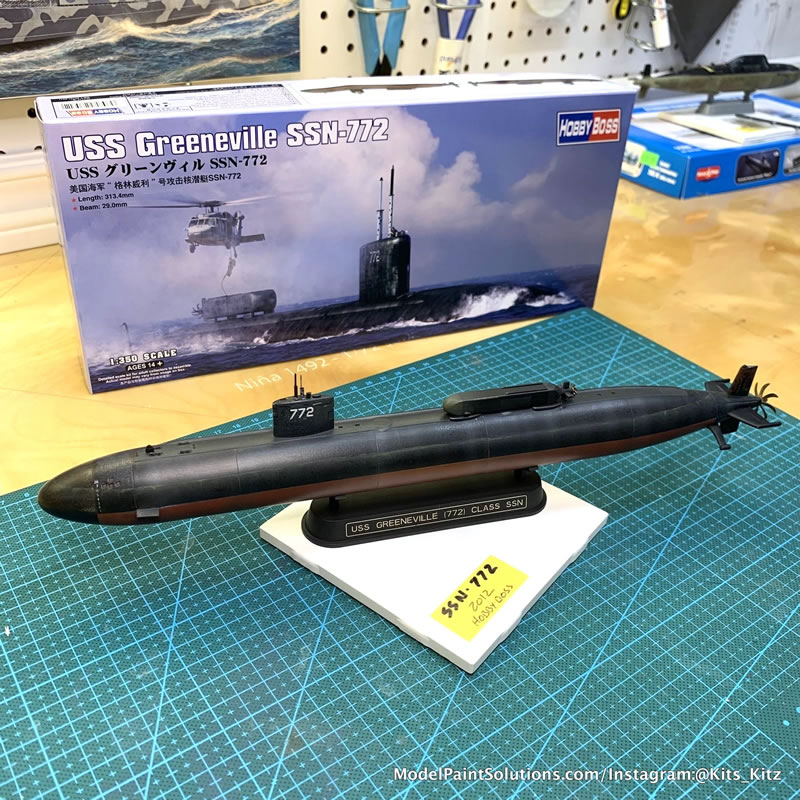
LA boats weigh 6,704 tons surfaced (which I rounded up to 7,000).
7,000 tons = 6,350,293,180 grams
Therefore, 6,350,293,180 grams / 42,875,000 = 148.11 grams (about half the weight of a can of soup)
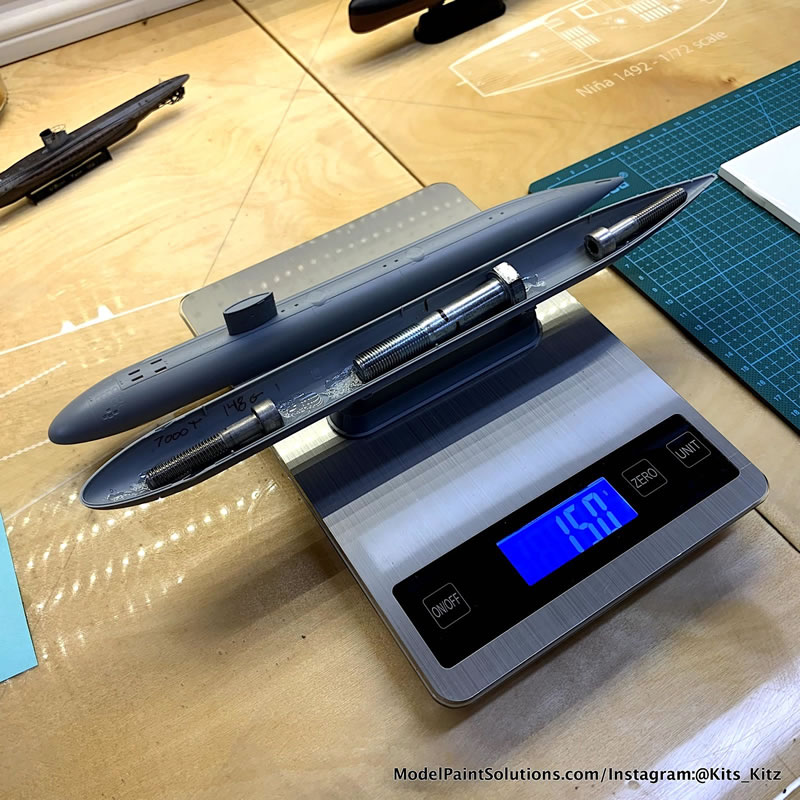
I rounded up so my LA class boat may be a bit heavy for a surfaced vessel. I achieved the weight using two-part epoxy from my local home improvement store to glue down a few stainless-steel bolts that I had in the garage. I do suggest securing these down as low in the hull as you can so the model’s not trying to flip over onto it’s more fragile top all the time. While super glue will work for this, super glue tends to be brittle, and having a bolt break loose and rattle around inside one of my models would be annoying.
The weight is best added as far into the build as possible but before the hull is closed up. The model does not need to be completed. Make sure that any parts that will be added to the complete model (especially any heavy metal PE) are on the scale when you work out the weight.
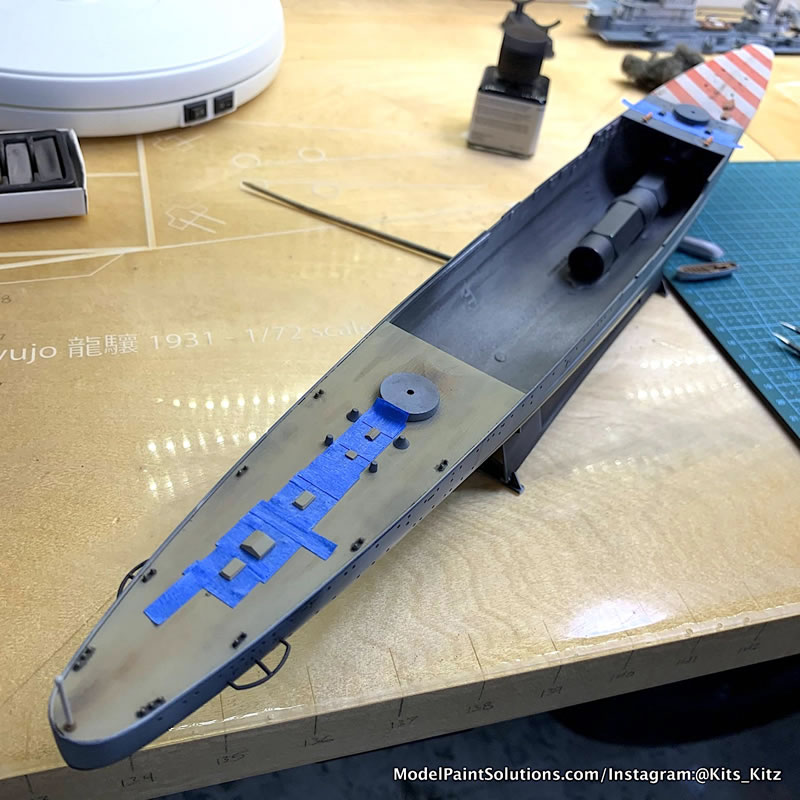
This is interesting to me when building ships, or armor. But, it’s less useful with aircraft where I would have to try and reduce weight instead of adding it. Scale weight is usually not achievable with aircraft.
One side benefit that I discovered (which seems obvious in hindsight) when I turned a couple of model ships into bath toys for my son is that a scale weight ship will float at an accurate waterline (assuming the weight is placed low enough in the hull.)
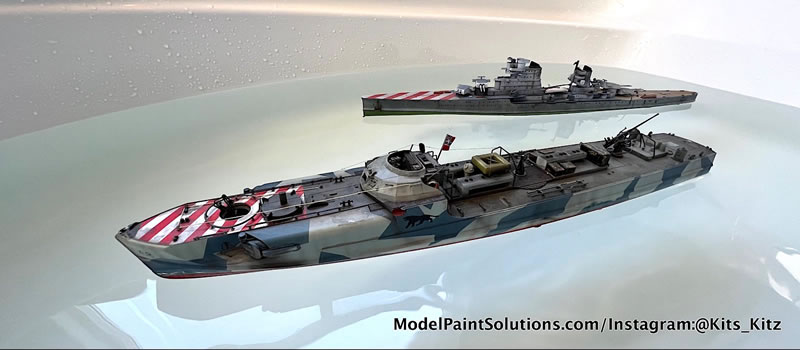
Some manufacturers have started to include metal slugs in their armor kits to add some general heft to them. I don’t think this is with scale weight in mind but rather to give the finished model more of a quality feel and help assure it sits nice and flat on display. This suggests to me that I’m not the only one that values this part of the modeling experience. But, if you are going to add weight to a kit, it’s worth the little bit of effort to make it accurate.
Happy modeling!
Kit
Instagram@Kits_Kitz
For more on this article visit ModelPaintSolutions.com
https://modelpaintsol.com/guides/a-study-in-calculating-scale-weight
Text and Images Copyright © 2023 by Kit Headley
Page Created 8 June, 2023
Last updated
9 June, 2023
Back to HyperScale Main Page
Back to Reviews Page

|
Home
| What's New |
Features |
Gallery |
Reviews |
Reference |
Forum |
Search